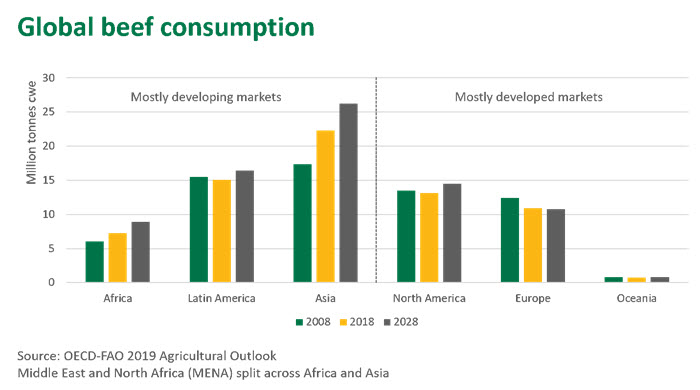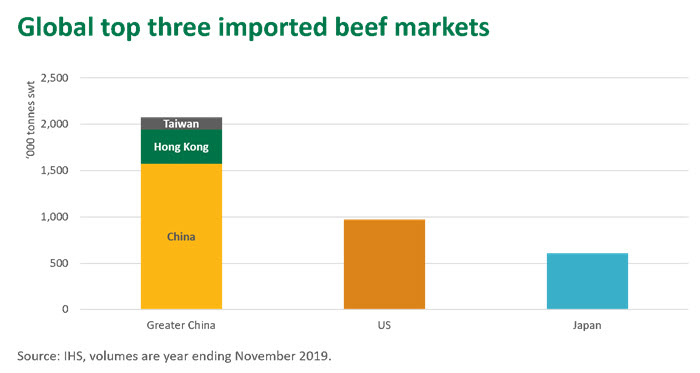In recent years, Australia has grown and diversified its beef exports into more than 100 markets around the world.
The recently updated report highlights Australia’s place in the global beef market with the following key topics covered:
- Emerging opportunities and challenges for Australian beef exports
- key consumption and supply insights and future trends
- global beef trade flows and competitive landscape
- comprehensive export, production and consumption statistics for Australia and key competitors.
Australia exported more than X% of its beef production in 2019, with the strength of global demand critical to the commercial viability of the Australian industry, particularly at times of expanding production. However, this growing reliance on the global market also comes with associated risks – such as greater exposure to the health of the global economy, currency fluctuations, market access changes and potential tides of protectionism – successfully navigating these risks will be critical to the ongoing profitability of the industry.
Positively, the fundamentals of beef consumption have been strong in recent years, as factors such as the growing number of affluent consumers, population expansion and more recently African Swine Fever (ASF), all continue to drive demand for beef across the globe.
Growing household incomes in developing markets are providing many consumers the ability to increase protein consumption, with those shifting into the middle-upper income brackets often seeking to improve the quality of meat they consume.
In developed markets, consumers are seeking differentiated segments within the beef category, such as grassfed and grainfed product, certified breeds or raising claims. Australia’s diverse production system allows the industry to target a broad range of these opportunities across key countries.

Global Beef Snapshot
Australia supplies red meat to over 100 markets, with trade heavily influenced by changing consumer demand in those markets.
The Global Beef Snapshot aims to not only provide information on what is currently driving red meat exports, but also to provide insights regarding the emerging consumer and industry trends that will influence Australia’s future exports into each market. For instance, MLA has identified that consumers in South Korea are motivated by safety, natural, freshness and environment as key considerations when deciding what meat to buy.
With Australian beef production and exports expected to tighten considerably through 2020, understanding how to communicate value to consumers effectively will be an essential aspect of remaining globally competitive. For detailed insights into each of our key export markets, MLA also publishes .
The landscape of international meat trade is evolving, with market heavyweight China having an increasing influence upon trade flows across the globe. A record 18% of global beef production was traded last year, largely driven into the Chinese market due to the pork shortfall caused by ASF. Many competitors have chosen to shift their primary focus towards China, buoyed by improving prices and market access conditions.







